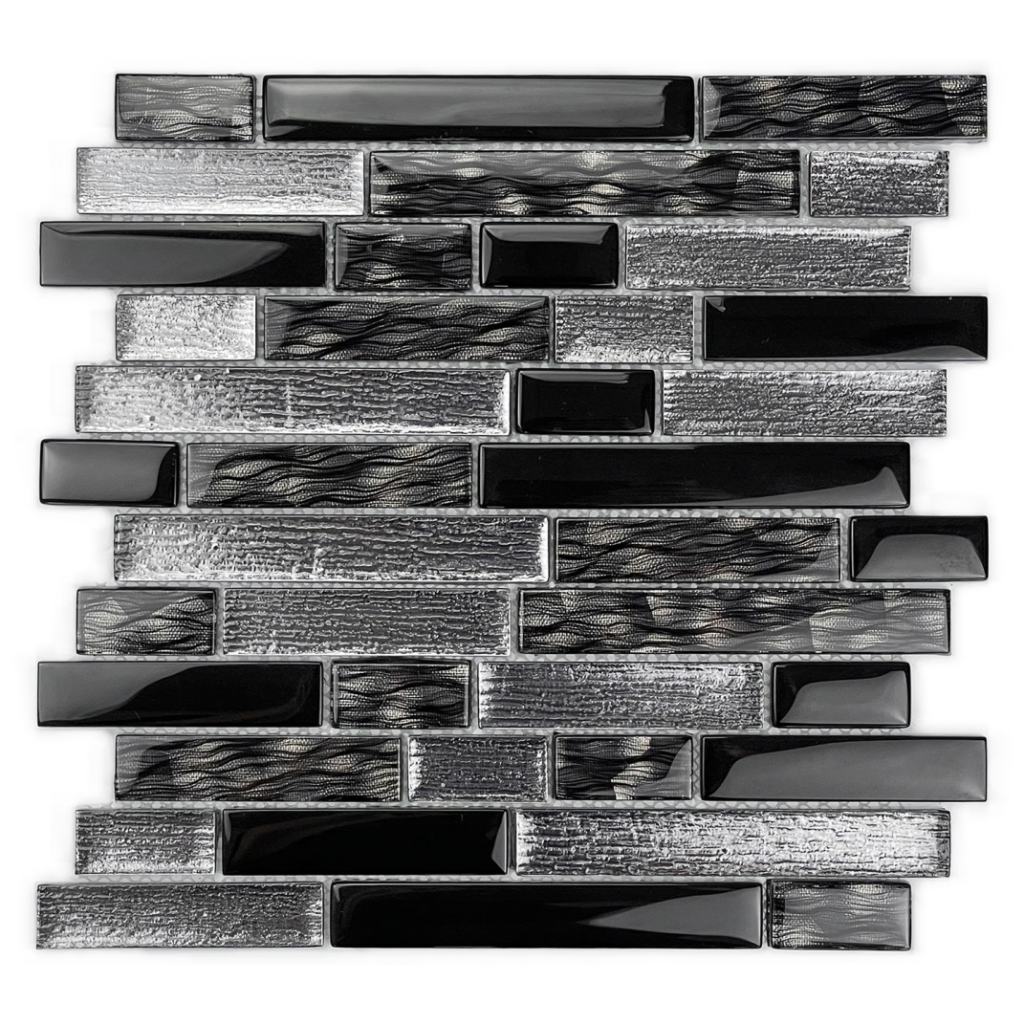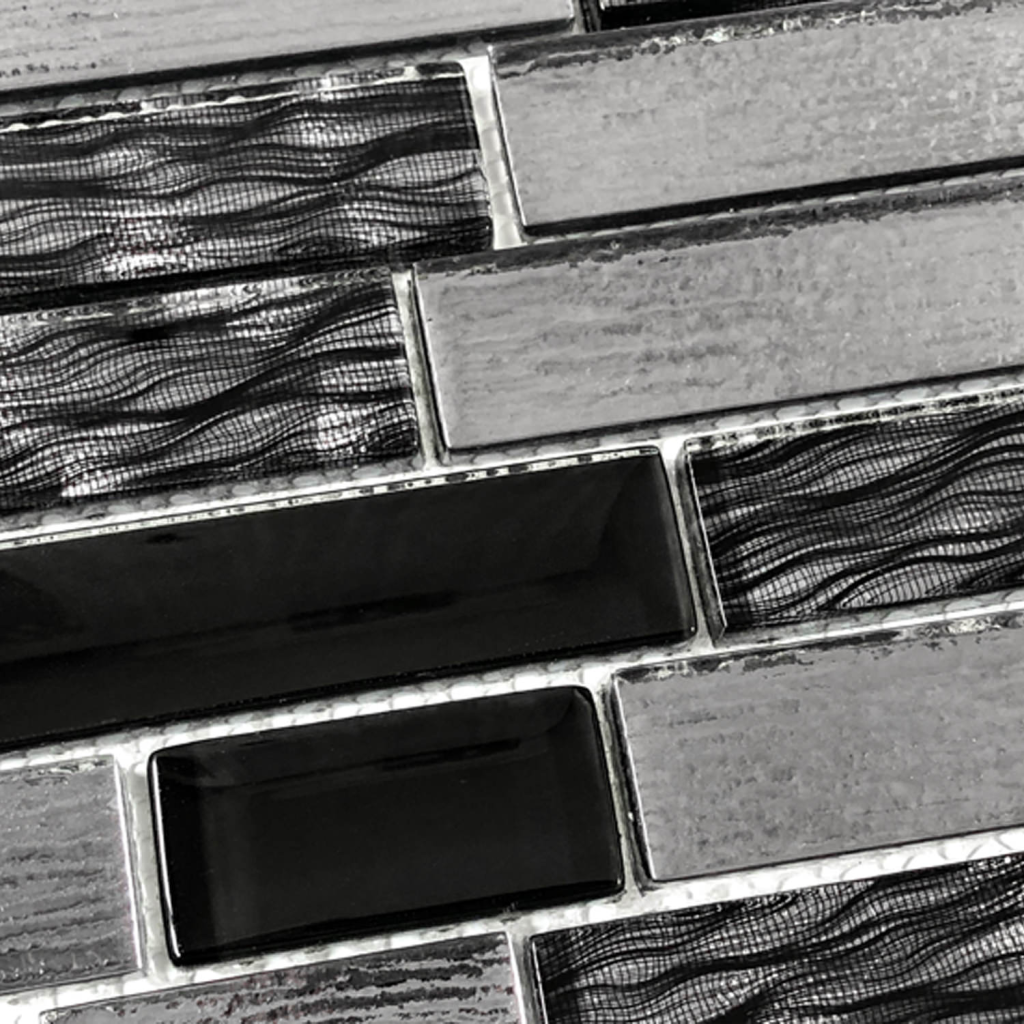Who made mid-century mosaic tile tray with metal back?
2022.02.21 / By hqt
How did the mosaic come about?

Who made mid-century mosaic tile tray with metal back? When we talk about grinding, we refer to a particular process that is carried out on the edges of the tile to make them completely straight and smooth. With this finish, the corners will be perfectly 90 ° to each other.
The advantage of laying a rectified tile consists in having a minimal and subtle joint: the final result is that of having a floor with tiles that look like a whole. Furthermore, by choosing the grout of the same color as the tile, the joints will be truly imperceptible.
Who made mid-century mosaic tile tray with metal back?
I recommend rectified tiles especially if you choose the wood effect or the marble effect: seeing a subtle, almost imperceptible joint will make your floor truly equal to marble or real wood.
The history of Mosaic stone goes back 4,000 years or more, with the use of a conical object made of terracotta and then attached to the ground for decoration. In the eighth century BC, there were cobblestone streets, using stones of different colors to create patterns, although these tended to be decorative without structure.
Who made mid-century mosaic tile tray with metal back? During the fourth century BC, the Greeks elevated the technique of using cobblestone to an art form, with exquisite design patterns and detailed depictions of people and animals.
Mosaic Tile tray with Metal Back
In 200 BC, inlays were common to provide more detail and color to works. Using small inlays, sometimes only a few millimeters in size, means that mosaics can mimic paintings exactly. Many mosaics have been preserved and have survived, for example, Pompeii is the work of Greek artists.
The mosaic here shows the god Neptune with Amphitrite (right) at Herculaneum in Italy. It's a mosaic wall that uses pieces of glass to give colors vivid and reflect light.
They are generally not suitable for floor mosaics. Here, the inlay is mainly small blocks of marble or other stone. Sometimes pieces of pottery, like terracotta, or bricks are common to provide a range of colors.
Best Mosaic Tile Tray with Metal Back
If you compare mosaics from Roman times with Italians, you will notice that British paintings look simpler in design and less technically perfect. Typical Roman subjects are scenes glorifying the gods, their domestic themes, and geometric designs. The criss-crossing effect here is called a "guilloche" (carved diagonal ornament).
Mosaic art of the Eastern Roman empires
With the rise of the Eastern Roman empires from the 5th century onwards, Byzantium (now Istanbul, Turkey) created the mosaic art form with new characteristics. These include Eastern influences in the style and use of inlays such as cobalt crystal, produced in northern Italy.

They come from thick sheets of glass. Cobalt glass has a rough surface and contains small air bubbles. They come sometimes supported with silver or gold foil for reflection.
Who made mid-century mosaic tile tray with metal back? Cobalt glass allows light to reflect and refract within the glass. In addition, they are placed at small angles to the wall, so that they catch light in different ways. Furthermore, yellow inlays will sparkle as the viewer moves around the building.
Islamic mosaic art
In Western Europe, the Moors were a population group that historically included Berbers, black Africans, and Arabs of North African descent, who conquered and colonized the Iberian Peninsula in recent years. 800 years.
They brought Islamic mosaic art to the Iberian Peninsula in the 8th century, while elsewhere in the Muslim world stone, glass and ceramic were all common in mosaics.
Today, instead of using monotonous paint colors to paint on the wall, people often use decorative ceramic tiles in a very popular way thanks to its outstanding properties. In the decorative ceramic tile industry, there are many different types. Moreover, mosaic tile is one of them. Mosaic bricks are widely common in both interior and exterior of houses and other architectural works.
What is Mosaic Tile?
Mosaic tile is a general term; it implies mosaic, joining small pieces together into an array of colors, patterns, shapes according to purpose.
Mosaic tiles of various colors and materials
Since more than 4000 years ago Mosaic bricks have been on the market, common for decorative purposes in the form of placing pointed terracotta balls on the ground. In the 8th century BC, the road surface was paved with stones of different colors creating patterns and structural alignment to bring beauty.
Who made mid-century mosaic tile tray with metal back? By the 4th century BC, the Greeks developed the technique of paving stones to create cultural art with bold geometric patterns, detailed human and animal perspectives.
Eye-catching mosaic tiles tray with metal back
The development of the ancient Roman Empire helped to advance the history of mosaic tiles very far. The period of the flourishing paving stone industry is also the period of strong development of mosaic tiles, they are common a lot in large-scale projects, bringing lasting architectural beauty with time until today.
Outstanding advantages of Mosaic tiles
Thanks to being common at high temperature and made up of many small bricks to form a large brick on the grid, this type of brick has the following advantages:
- Durable, hard, light and especially waterproof, not corrosive to chemicals
- In addition to high aesthetics, they are resistant to acids, alkalis, wear-resistant, waterproof and not fragile
- Stick together with specialized tape to form extremely strong brick blisters
- Compact size, elegant color, mosaic is widely common to make wall tiles, floor tiles in construction, interior and exterior decoration.
Moreover, bricks can create many different artistic colors, shapes and materials, mixed into many shapes, on many materials and many decorative spaces.
Advantages of Mosaic tiles
- Luxury bathroom when clad with Mosaic tile
- Classification of Mosaic tiles
- Moreover, enamel Mosaic Tiles
- Furthermore, classification of Mosaic tiles
Enamel Mosaic Tiles
Features: This tile has good moisture-proof, waterproof, high-wear resistance, easy to clean stains. The surface of the product is rough, if it is coated with enamel and fired, it will become shinier.
Application: it is a low-adhesion tile, so it is suitable for use in kitchens, bathrooms or outdoor spaces.
Marble Mosaic tile tray with metal back
Features: Mosaic tiles favor natural patterns, creating a good effect in decoration. The colors and types of products are diverse and can be combined with different colors into images with different styles, bearing personal imprints.
Application: This tile pattern is widely common in the lobby of restaurants, hotels, exhibition halls

